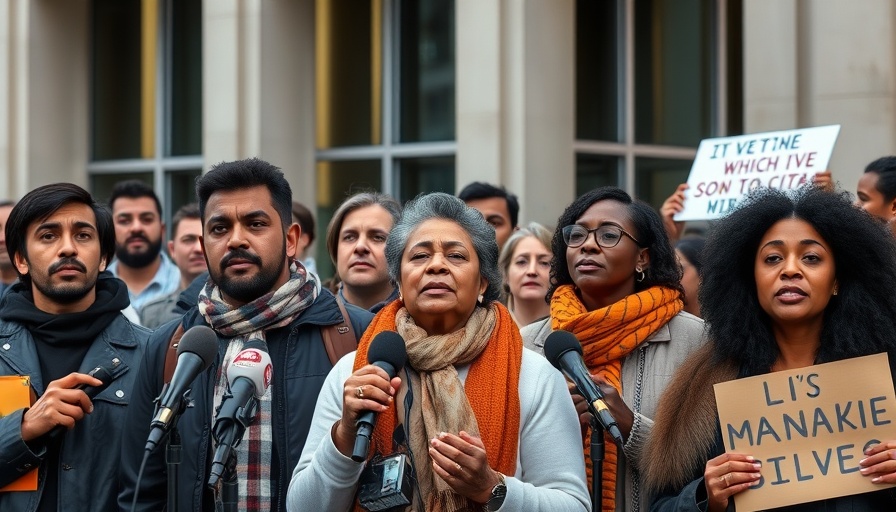
Unearthing History: Access to a Slave Burial Site
In a significant move that underscores the ongoing battles fought by communities across Louisiana, environmental organizations are pursuing legal action against Formosa Plastics. This lawsuit aims to gain access to a slave burial site located near the company's proposed industrial complex in St. James Parish. The controversy reflects broader historical and socio-ecological dimensions, tying together the legacies of slavery, environmental justice, and civil rights.
The Importance of the Burial Site
The site believed to hold the remains of enslaved ancestors is more than just a burial ground; it is a testament to the resilience and struggles of previous generations. By securing access to the site, activists aim to conduct historical studies and ensure that this vital aspect of African-American heritage does not disappear under layers of plastic production. Activist groups argue that this is critical for acknowledging the sacrifices made by the ancestors of today's African-American families in Louisiana.
Community Engagement and Environmental Justice
For residents of New Orleans and surrounding areas, the lawsuit highlights the intersection of civil rights and environmental activism. Activist groups are rallying community members through public forums, seeking to raise awareness about the potential environmental impact Formosa's facility might have on the surrounding lands. Alongside protecting the burial grounds, advocates aim to bring forth tangible change regarding how marginalized communities are often disproportionately affected by industrial pollution.
Historical Context: A Legacy of Struggle
Louisiana's rich tapestry of history must confront its ties to slavery and the resulting social inequities. The environmental concerns surrounding Formosa’s plans bring to light past injustices faced by the African-American community, emphasizing the need to honor historical narratives while striving for social justice. This ongoing lawsuit mirrors similar struggles within the state as communities push back against developments threatening their heritage.
Future Implications of the Lawsuit
Many are watching the outcome of this legal battle closely, as it not only signifies community resolve but may also set precedents for how communities engage with corporations impacting their land and histories. If successful, this movement could inspire greater accountability from corporations, leading to more equitable practices in areas such as land use and historical preservation.
Actionable Insights for the Community
Members of the New Orleans African-American community and allies can engage with this fight in various ways. Joining local advocacy groups, participating in community meetings, and donating to organizations representing collective interests are just a few proactive steps residents can take. Furthermore, utilizing platforms like The Louisiana Weekly can spread awareness and harness greater support for the preservation of both cultural heritage and environmental health.
Conclusion: Standing Together for Our Heritage
This lawsuit is more than just a legal objection; it embodies the collective efforts to honor the past while protecting the future. As advocates for civil rights and environmental justice, it's essential to stay informed and involved in these matters. Together, we can ensure that history remains honored and that future generations benefit from preserved heritage. To learn more about the developments in this case and how you can support the movement, be sure to follow the latest updates from The Louisiana Weekly.
 Add Row
Add Row  Add
Add 



Write A Comment